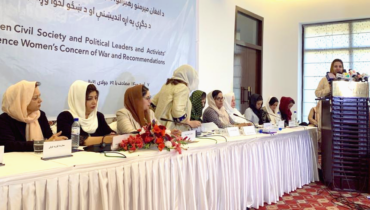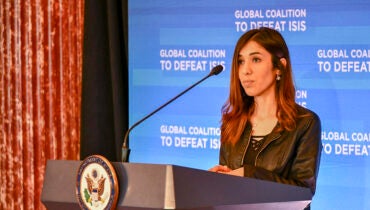The historical role of women as peacebuilders among communities is well acknowledged in this region. Evidence of this can be seen in community processes, as well as the more formalized peace talks in Somalia and South Sudan. Also, among cross-border communities (which exist in all the 11 neighboring countries), there have often been well-established early warning systems that detect impending conflict, occurring mainly due to competition for natural resources. These informal knowledge and peacebuilding skills are invaluable, and should be seen to complement the ‘hard’ security approaches that the region is currently witnessing. These include the deployment of the African Union Mission to Somalia as well as the development of anti-terror laws and frameworks.
This is especially true due to the nature of the threat. Extremism grows within communities and thrives among networks. Women are uniquely positioned to detect and curb such progression at the societal level before the situation escalates to the national and regional levels. It has been the case that as the region designs responses for countering violent extremism (CVE), it is easy to relegate gender issues to the backburner, as they are not seen as immediate security concerns in what are mostly highly militarized operations. The effect of not including gender considerations in the design and implementation of countering terror and violent extremism, however, can lead and has led to the violation of women’s human rights in the region, either by intention or omission. It also creates blind spots in strategies that largely overlook the role of communities and especially women in CVE.
On 13th October 2015, in recognition of the role that women can play in countering violent extremism, the United Nations Security Council passed UNSCR 2242. As the eighth resolution on the Women, Peace and Security agenda – after UNSCR’s 1325 (2000), 1820 (2008), 1888 (2009), 1889 (2009), 1960 (2010), 2106 (2013) and 2122 (2013) – it is a timely and comprehensive document. However, in a region that is still grappling with the implementation of UNSCR 1325 as well as the design and implementation of National Action Plans, enforcement may not be immediate. In addition, all regional and international commitments which require that women be involved at all stages of decision-making in peacebuilding and conflict resolution may be disregarded in the face of urgent terrorist threats and the ensuing responses. Here, civil societies, who have led the advocacy for women’s inclusion in peace and security, must again take the lead in lobbying for women’s inclusion in countering violent extremism. Indeed, many women’s networks and organizations have been engaged in the work envisioned by the framework before its passing.
This inclusion of gender perspectives in CVE can take various forms, including the following:
- Recognizing the increasing role of women not just as victims, but also as key actors and perpetrators of terrorism and violent extremism in the Great Lakes and Horn of Africa. As noted by Gennesson and Alam, women are not homogenous and play various roles in violent extremism, including victims, actors and peacemakers. The role of women as key actors in terror attacks in the region has been identified, and needs to be further researched and interrogated in a way that adds value to the design of responses.
- The indigenous local efforts of women within local communities and how these can be incorporated into CVE responses at the national and regional levels. Olonisakin, Barnes and Ikpe note that, with few exceptions, failure to link formal processes in peace and security with indigenous peacebuilding efforts results in the relegation of local approaches to the background. Here, civil society engagement is critical, as is the inclusion of ‘small’ informal women’s organizations without imposing the stringent requirements of registration and formal structuring.
- A more coordinated regional response on peace and security issues to ensure that the contextual nuances of the Great Lakes and Horn of Africa region are not lost in the design of adequate responses. Early warning and subsequent action is also more realistic and possible at a sub-regional level, and makes it easier to use and incorporate CVE information. This multi-layered approach to security, from the local to the national, regional and international levels, will ensure that efforts build into each other and result in enhanced peace and security, as well as standardize the inclusion of gender perspectives.
- As UNSCR 2422 rightly identifies, the allocation of resources to women’s efforts to counter violent extremism as opposed to high military spending that excludes their perspectives and contributions must be prioritized. There is already limited and inadequate funding available for women’s rights organizations working on peacebuilding, both in national budgets and other funding sources. The idea that there is no critical gender aspect in CVE responses further shrinks this funding base and needs to be addressed.
The success of any resolution depends on a variety factors such as political will, adequate implementing frameworks and local ownership. UNSCR 2242 is no different. What it does provide, however, is a much needed and immediate roadmap for fast-tracking women’s inclusion and participation in CVE in the Great Lakes and Horn of Africa. It will be significantly enhanced if it takes indigenous and local initiatives into account, increases resourcing of women’s initiatives and promotes the inclusion of women in all stages of design and implementation of responses to prevent, reduce and counter terrorism and violent extremism in the region.


